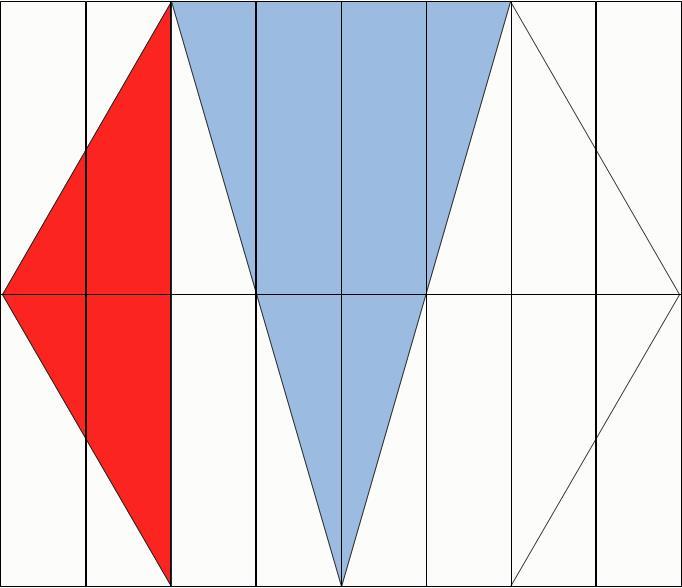Red vs. Blue: The Hexagon Edition
Given the regular hexagon below, the ratio of the red area to the blue area can be expressed as
B
A
where
A
and
B
are coprime.
Find B − A .
This section requires Javascript.
You are seeing this because something didn't load right. We suggest you, (a) try
refreshing the page, (b) enabling javascript if it is disabled on your browser and,
finally, (c)
loading the
non-javascript version of this page
. We're sorry about the hassle.
3 solutions
Hey, David, can I ask you what program you use to create your diagrams? I've been using Geogebra and it works nicely in most cases but it's quite bad at shading, especially overlapping areas like you have in the above example. Thanks!
Log in to reply
I just use Microsoft Paint. For this problem, I used the hexagon tool but had to guess to make it look like a regular hexagon, and then later on guess at where the middle of the hexagon is. So my drawings may not be exactly on, but close enough to get the point across.
Log in to reply
Thanks, David, I'll give that a try; I actually thought the drawings looked quite good.
There's a more efficient visual way to answer this, but I wanted to use some Precalculus!
Let s be the side length of the regular hexagon and h be the vertical height of both the red and blue triangle.
Because each interior angle of a regular hexagon is 1 2 0 o , you can use the Law of Cosines with the red triangle to solve for h in terms of s .
h 2 = s 2 + s 2 − 2 s 2 cos 1 2 0 o
h = s 3
Using A = 2 1 a b sin C for the red triangle, I found A = 2 1 s 2 sin 1 2 0 o = 4 3 s 2 . Using A = 2 1 b h for the blue triangle, I found A = 2 1 s ⋅ s 3 = 2 3 s 2 .
The blue triangle's area is twice that of the red triangle's area, so the ratio of red to blue is 2 1 . Since A = 1 and B = 2 , B − A = 1 .
From the picture below:
Lets assume that each small rectangle has an area equal to R
Red area = 0 . 5 ∗ 4 ∗ R = 2 R
Blue area = 0 . 5 ∗ 8 ∗ R = 4 R
Red to Blue area = 4 R 2 R
B A = 2 1
B − A = 1

The red triangle can be cut and rotated as follows, preserving its area:
The blue triangle has the same base but twice the height as the red triangle, so its area is twice as big.
The ratio of the red triangle to the blue triangle is therefore 2 1 , so A = 1 and B = 2 , and B − A = 2 − 1 = 1 .